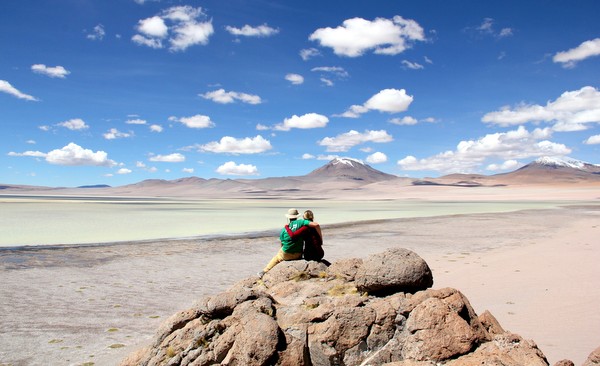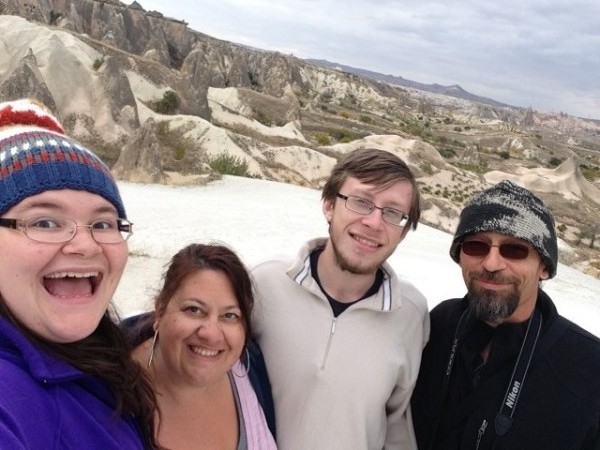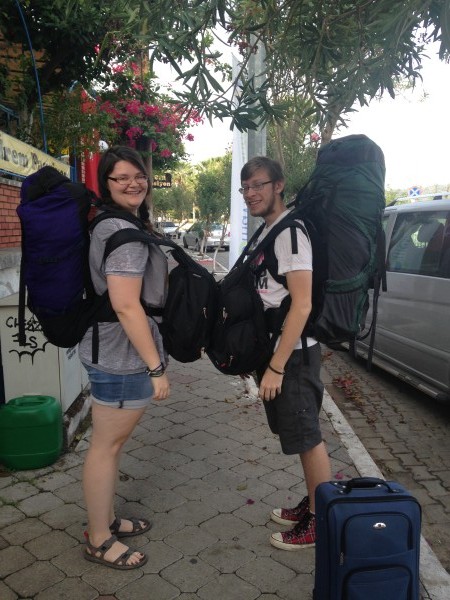 “Are you guys millionaires or something?” That’s often the response when we tell people we’ve been traveling the world for the past four years on our HoneyTrek. We aren’t rich, but we are diligent savers and big dreamers. After working in New York for ten years and putting away as much money as possible, we decided life was short, the world is big, and there would never be a better time to travel than now. Averaging under $40 per person per day, we’ve explored 44 countries (and counting) across 7 continents. Here is our strategy and a few tips you can employ when saving and planning for your own lifetime of unforgettable travel.
“Are you guys millionaires or something?” That’s often the response when we tell people we’ve been traveling the world for the past four years on our HoneyTrek. We aren’t rich, but we are diligent savers and big dreamers. After working in New York for ten years and putting away as much money as possible, we decided life was short, the world is big, and there would never be a better time to travel than now. Averaging under $40 per person per day, we’ve explored 44 countries (and counting) across 7 continents. Here is our strategy and a few tips you can employ when saving and planning for your own lifetime of unforgettable travel.
Outline Your Itinerary
Determining where you’d like to go and for how long will largely determine your budget. Remember, there are plenty of extremely beautiful and affordable regions of the world (Southeast Asia, Central America, Eastern Europe, etc), and you don’t need to visit them all in one shot. Laying a linear path from one place to the next will reduce your transportation costs and stress level. To help figure out your required budget, based on your travel speed and destinations, check out this handy RTW Country-Cost Calculator we built.
Evaluate Your Funds
Now that you have a ballpark cost for your dream RTW, you need to compare that number to the balance in your savings. If your bank account is a bit light you can swap out some of those expensive countries, travel slower, and start an intense savings plan until you reach your goal. Follow our small-dose savings strategy in the next section and you’ll be on the road in no time.

Small-dose Saving
If you save just $10 a day for two years you will have enough money for a 6-month RTW. Save $13 a day for three years and you can globe-trot for an entire year. To help yourself stay on track and keep your hand out of the cookie jar, open a separate travel savings account ASAP. If you don’t have a steady paycheck and financial flow, check out DigIt.co which will automatically fill your travel savings account when you have extra cash, and scale back your contributions when times are tight. And if you have complex questions on saving, you can always reach out to the financial planning pros for some advice.
Ways to Cut Expenses
First, you will need some basic self-restraint, like going out less and avoiding impulse buys (yes, that cappuccino counts). Go through your monthly expenses and see where you can cut or switch to cheaper services. Swap your $150 cable bill for a $0/month digital antenna, switch to a cheaper phone plan (ours went from $100 to $40 a month with AT&T’s Go Phone Plan), and find more ways to trim your bills.
Make Extra Cash
Make money using the skills and the things you already have. AirBnB the extra room in your home, sell excess stuff on Ebay, rent your car on a peer-to-peer sharing site like GetAround, pick up part-time gigs like babysitting, dog walking, or driving for Uber and LYFT. Check out CompareAndShare.com for more opportunities in the sharing economy. Be diligent and get creative!
Budgeting on the Road
Prices vary greatly between countries so you will have to adjust your daily budget accordingly. Just because a place is cheaper, doesn’t mean you should splash out. Be as frugal as possible on expenses (food, lodging, transportation) so you are able to splurge on the things that are unique to the region (a base camp trek, scuba trip, safari, cultural outting, etc.) and the occasional treat. Always bargain. Before you start negotiating, learn the local prices on typical goods and services so that you have a benchmark to work from. Vendors in developing countries usually start 2-3 times higher than the price they are willing to accept. Remember to save where you can and spend when it counts.

Becoming a Life-Long Saver
Managing a finite amount of money for an extended period of time is similar to that of retirement. Getting this practice earlier in life, teaches you to be creative, resourceful, and prioritize your spending for unforgettable experiences. We realized we didn’t need a million dollars to explore the world and that we won’t need a fortune to retire…travel has taught us how to live a simpler and richer life and that you don’t need much to be happy.
By Mike & Anne Howard, Founders of HoneyTrek & RTW Packing List
Connect with us on Facebook, Instagram, and Twitter
Disclosure: This post was brought to you via Fisher Investments, however all opinions expressed here are the author’s own.










 Paul Fusco is an avid traveler who works as an Executive Recruiter at an international management consulting firm in Manhattan. He took his first career break in early 2010 and recently achieved a personal objective of visiting thirty countries by the age of thirty, celebrating in both Israel and Jordan. In his spare time Paul writes, maps out future destinations, and enjoys New York City for all it has to offer.
Paul Fusco is an avid traveler who works as an Executive Recruiter at an international management consulting firm in Manhattan. He took his first career break in early 2010 and recently achieved a personal objective of visiting thirty countries by the age of thirty, celebrating in both Israel and Jordan. In his spare time Paul writes, maps out future destinations, and enjoys New York City for all it has to offer.



 There are three types of annual memberships to Priority Pass. The Standard membership is $99 with a $27 fee for each VIP lounge visit. The Standard Plus membership is $249 and includes access to 10 lounges, then $27 for each additional visit. The Prestige membership is $399 and all lounge visits are included.
There are three types of annual memberships to Priority Pass. The Standard membership is $99 with a $27 fee for each VIP lounge visit. The Standard Plus membership is $249 and includes access to 10 lounges, then $27 for each additional visit. The Prestige membership is $399 and all lounge visits are included. 







